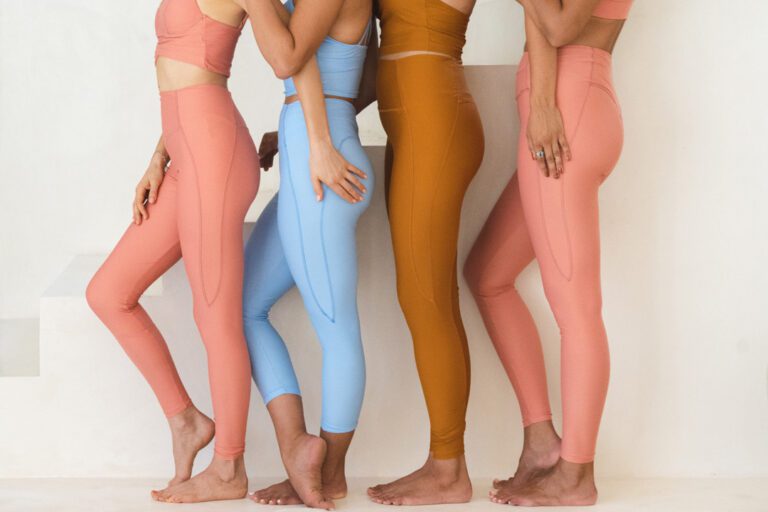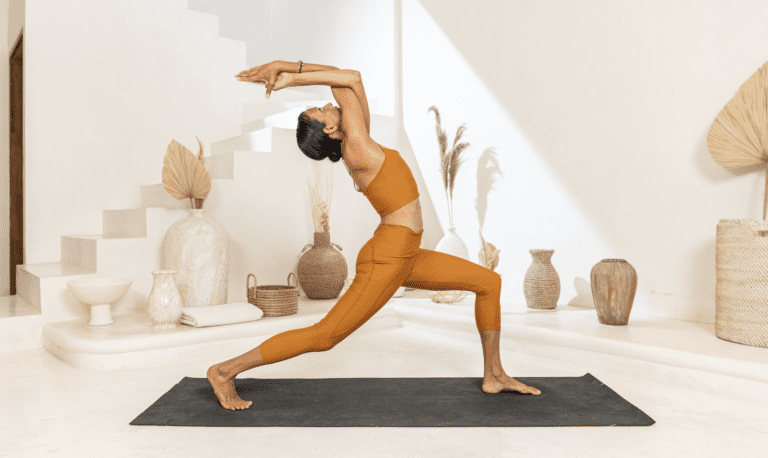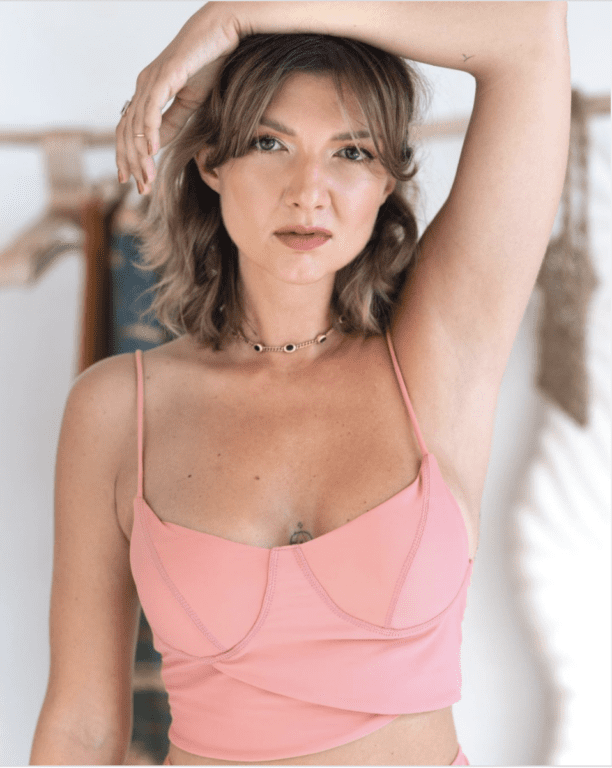Looking at True Cost of Sustainable Clothing with Starseeds CFO, Mateusz Zawada
- Being Outside Is Good For Your Body and Mind — Here’s Why - December 14, 2023
- The Chicest Bracelets for Women (All Under $100) - December 14, 2023
- Water Is Life — Here Are 11 Simple Ways to Drink More of It - December 14, 2023
As consumers, we’re faced with making decisions about what to purchase every day. We weigh our needs, budget and ethical views as we look to strike a balance between sustainability and style. Anyone browsing ethical fashion will have noticed that the clothing costs more, but why? We reached out to London-based brand, Starseeds, a ‘slow fashion’ brand at the forefront of the ethical clothing movement to ask: What really accounts for the price of sustainable clothing? Mateusz Zawada, CFO of Starseeds, responds:
The fabrics are more expensive
Wanderlust TV guide, Pip Elysium in Starseeds
“The prices of sustainable fabrics are, on average, two and a half to four times more expensive in comparison to more commonly used fabrics. This rise in price is partly because they’re more expensive for the manufacturers to produce. For example, organic cotton needs to be grown on soil that’s been cleansed for at least three years to allow it to return to the level of biodiversity which allows the crop to grow naturally, without toxic fertilizers. It is being picked by hand and doesn’t grow as efficiently as the one with use of toxins, but the quality is much higher and more durable which should make it fair for the cost to rise.
Moreover, the eco-friendly dyes and prints are also more time and cost-consuming which adds up to the price.”
Eco textiles are in lower demand
“While they are growing in popularity, as it stands, eco textiles simply aren’t in as much demand as cheaper, mass produced fabrics like polyester or (non-organic) cotton. The greater the market demand there is for a product or service the more competition, the more that drives down prices when manufacturing in higher quantities.
The same principle also applies to eco dyes (natural dyes made from plants, animals or minerals) —the demand is not as high and thus the manufacturing processes are expensive. Natural dyes require a vast area of land for them to be sourced in any quantity, and you also need more of the dye itself (for example 100g of wool would need around 50g of dried madder root to dye it).”
The finishing touches

“One of the many advantages of choosing sustainable fashion is that the clothing is often of a much higher quality, right down to the small details. As well as better quality fabrics and manufacturing processes, sustainable clothing focuses on high quality details, such as the threads, cloth tags, hang tags, fastenings, and packaging.
Our garments are packed in biodegradable foils which are then stored in big cardboard boxes. And as much as we can we try to reuse all the materials involved in storing. While posting to you we use an eco-friendly paper with water-based glue tape and recycled paper boxes. Our clothing tags are made of a reusable seeded paper- which you can plant and add to your home garden.”
How the pandemic offered silver linings
The garment industry endured huge repercussions when the global pandemic arrived, and we asked Starseeds Founder and designer, Natalia Zawada, how this era will create a new relationship to clothing for this generation. “During the pandemic,” says Natalia, “people had no choice but to slow down, turn inwards, which naturally affects our decision-making process. Collectively, we became more conscious and careful about consuming. The pandemic offered a chance for people to start caring about sustainability.

Starseeds provided the garments for Insiya Rasiwala-Finn for the Wanderlust TV 10-Day Gentle Reset shot in Bali
On a practical level, being locked down in our homes made us more aware of the space that clothing takes up in our households. And on a more global level, many factories worldwide were closed or working with a minimum staff which affected the production flow massively. Here at Starseeds, our new collection made in Bali was delayed by months. The import-export became way more expensive. The parcels were not arriving on time.
However, as a sustainable business with responsible production philosophy, at Starseeds we are used to facing delays, as we are accustomed to the inherent limitations that come with producing in an ethical and sustainable way. Finding materials and waiting for them to be produced and dyed is one. Also, cutting and sewing at normal pace—instead of pushing people to work after hours—makes the whole process slow in comparison to fast fashion businesses. But for us it’s crucial to choose the wellbeing of all people working in our supply chain.
The majority of the consumers don’t have patience to wait. But we know from the experience that our loyal clients are able to wait for quality products. We truly hope the pandemic taught the consumers a bit more patience with clothing purchase.”
 Before You Buy, Ask Yourself…
Before You Buy, Ask Yourself…
We asked Natalia what questions consumers should ask themselves before purchasing a garment. “The same questions we ask ourselves before we design a piece:
- How much do I desire this item?
- What would I do if I get bored with it or no longer need it?
- Will it last more than a season or two? (Consider both aspects of the longevity: the quality as well as whether the design can last)
- What is the functionality and versatility of use? Can I wear it outside the yoga studio?
- How would it make me feel? (Consider few aspects: the fabric, the color and the style)
Yoga beyond the Mat
When we asked how the yogic mindset expresses itself in choices we make outside of our asana practice, Natalia shared how yoga has entwined itself with her career and lifestyle inextricably. “My journey with yoga started about 15 years ago, but it was right after leaving Alexander McQueen fashion house in 2010, when I thought about improving my wellbeing and got more serious about the yoga philosophy as a whole. Ever since then, yoga became my way of living. Starseeds was a natural outcome of merging those two words- fashion and yoga. My practice wasn’t just about feeling good in my body anymore, but about finding healthy and balanced life flow. Thanks to my daily morning rituals and especially meditation practice I can say I feel very present and guided by my intuition. Couple of months before the pandemic, I made a decision to move our business to e-commerce and relocated in Bali. Thanks to that, we were able to slowly transition our production to Bali. The time was certainly challenging, especially for niche brands like us, but we learned that we can survive. I simply cannot imagine my life without yoga anymore.”
~~

Natalia Zawada is the Founder and Art Designer at Starseeds. She received her Fashion/ Tailoring degree at London College of Fashion, her Fine Art degree at Warsaw Academy of Fine Arts, and is a certified Hatha, Yin and AcroYoga Teacher. Natalia’s fashion journey started over 15 years ago, while she was working at printed luxury fashion and lifestyle magazines in Warsaw, including Elle Poland. After relocating in London she took work placements in several fashion houses, and worked at Alexander McQueen print department and completed tailoring degree, following the footsteps of the Master. While on her yoga journey Natalia left the luxury fashion to start her slow fashion brand Navada, and shortly after Starseeds was born. Natalia is also a dedicated lifetime Yoga student and practitioner.